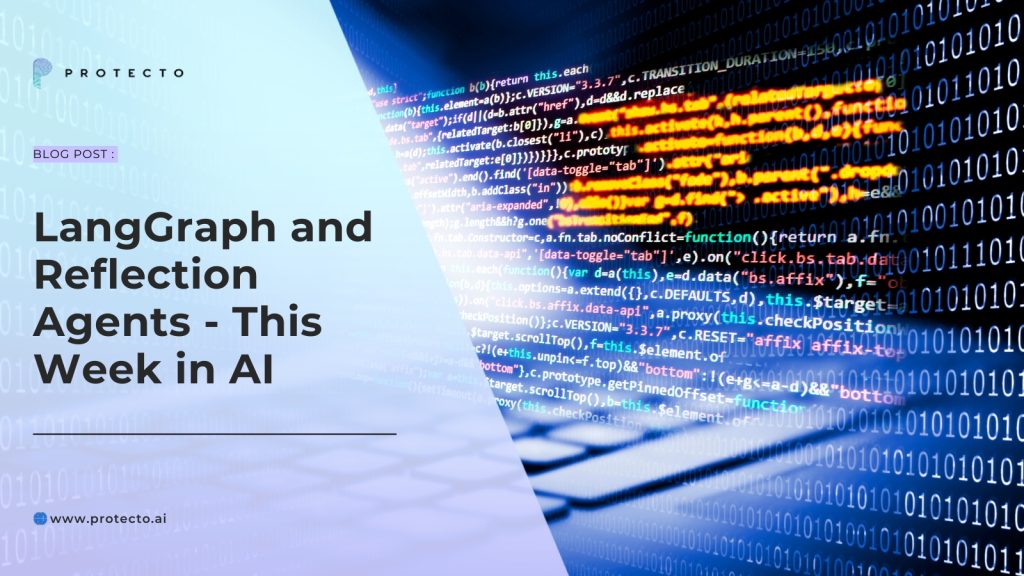LangGraph Revolutionizes Code Generation with Iterative Flow
In the ever-evolving terrain of artificial intelligence, OpenAI’s LangGraph is making waves by introducing a groundbreaking approach to code generation and analysis.
With the prominence of tools like GitHub Co-Pilot and the popularity of projects such as GPT-engineer, the demand for innovative solutions in this domain has never been higher. LangGraph aims to meet this demand by leveraging a flow paradigm inspired by recent advancements like AlphaCodium to enhance the efficiency of code generation.
Flow Engineering with LangGraph
LangGraph, introduced by OpenAI, is designed to support flow engineering, allowing users to represent complex flows as a graph. Drawing inspiration from the success of AlphaCodium and Reflexion, LangGraph aims to demonstrate its prowess in implementing code generation with iterative cycles and decision points.
The primary focus of LangGraph is to compare and evaluate two distinct architectures for code generation:
1. Code generation via prompting and context stuffing.
2. Code generation flow involving code checks, execution, error feedback, and reflection for self-correction.
Key Findings and Improvements
The findings are quite remarkable: the system that verifies the code and makes efforts to correct it has demonstrated a significant improvement over the standard method of a single generation. In particular, the iterative approach achieved an 81% success rate, compared to the 55% of the baseline. This indicates a substantial increase in performance, highlighting the potential of LangGraph in improving code generation systems.
Problem and Corpus Selection
A focused corpus of documentation related to LangChain Expression Language (LCEL) was chosen to demonstrate code generation capabilities. Mined from 30 days of LangChain-related chat discussions, a subset of approximately 500 questions mentioning LCEL was clustered. A ground truth answer was manually generated for each question, forming an evaluation set.
Code Generation Workflow with LangGraph
LangGraph’s code generation flow involves context stuffing of LCEL documentation using GPT-4, parsing the output into a Pydantic object, and executing checks at two crucial stages: import execution and code execution. Importantly, if any check fails, the system takes a reflection step, allowing the generation node to re-try up to three times.
Evaluation with LangSmith
Comparative evaluations used LangSmith as the baseline for context stuffing without LangGraph. The results showed that LangGraph, with its error checking, feedback, and reflection steps, achieved a 100% success rate in import tests and an impressive 81% success rate in code execution tests. In contrast, context stuffing alone yielded approximately 98% accuracy in import tests but only 55% in code execution.
Conclusion and Future Prospects
LangGraph emerges as a powerful tool for engineering flows with iterative cycles and decision points, which is particularly beneficial for code generation. The successful implementation and testing of LCEL-related questions showcase LangGraph’s potential for enhancing code execution by incorporating checks and reflections. The findings suggest a promising future for LangGraph in advancing code generation systems and iteratively improving answers to coding questions.
Revolutionizing AI Systems: LangGraph Unveils 3 Cutting-Edge Reflection Techniques
In a leap towards enhancing the quality and success rate of artificial intelligence (AI) systems, LangGraph, developed by OpenAI, introduces three groundbreaking reflection techniques. To understand this, we need to delve into implementing these techniques, highlighting their potential to revolutionize the way AI agents operate.
The Power of Reflection in AI Systems
Reflection, as a prompting strategy, emerges as a powerful tool to elevate the capabilities of AI agents. It involves prompting a Large Language Model (LLM) to reflect on and critique its past actions, allowing for iterative improvements. Here, we explore in detail three distinct reflection techniques using LangGraph, emphasizing their impact on the performance of AI systems.
Understanding System 1 and System 2 Thinking
Drawing an analogy from human cognition, it is crucial to acknowledge the distinction between “System 1” (reactive or spontaneous) and “System 2” (methodical and reflective) thinking. Introducing reflection into AI systems aims to steer them away from purely reactive patterns, fostering behavior closer to System 2 thinking.
Three Reflection Techniques Unveiled
1. Basic Reflection:
– Combines two LLM calls: a generator and a reflector.
– The generator responds directly to user requests, while the reflector acts as a teacher, offering constructive criticism.
– A fixed number of iterations occur, generating the final output.
The LangGraph representation of the loop involves conditional edges and a stateful graph, enabling the model to refine its output through multiple attempts.
2. Reflexion:
– Based on the architecture by Shinn et al., Reflexion involves explicit critiques grounded in external data.
– The actor agent critiques each response, forcing the generation of citations and enumerating aspects of the response.
– The logic is defined in LangGraph, involving a draft-responder, tool execution, and a revisor responding in a loop.
Reflexion effectively produces constructive reflections, steering the generator toward improved responses.
3. Language Agent Tree Search (LATS):
– LATS, inspired by Zhou et al., combines reflection, evaluation, and search to enhance task performance.
– Adopts a reinforcement learning framing, utilizing LLM calls to adapt and problem-solve for complex tasks.
– The search process involves selection, expansion and simulation, reflection and evaluation, and backpropagation.
The LangGraph implementation uses a tree structure to represent state and decision-making, providing a holistic approach to reasoning and planning.
Paving the Way for Enhanced AI Capabilities
LangGraph’s implementation of these reflection techniques signifies a paradigm shift in the development and application of AI systems. While these approaches demand additional compute resources, the trade-off for improved output quality is worthwhile, especially in knowledge-intensive tasks where response quality surpasses speed.
The examples presented in the LangGraph repository serve as a testament to the versatility and potential impact of these reflection techniques. As AI continues to evolve, integrating reflective strategies promises to contribute significantly to advancing AI capabilities, opening avenues for enhanced problem-solving and reasoning in complex tasks.



